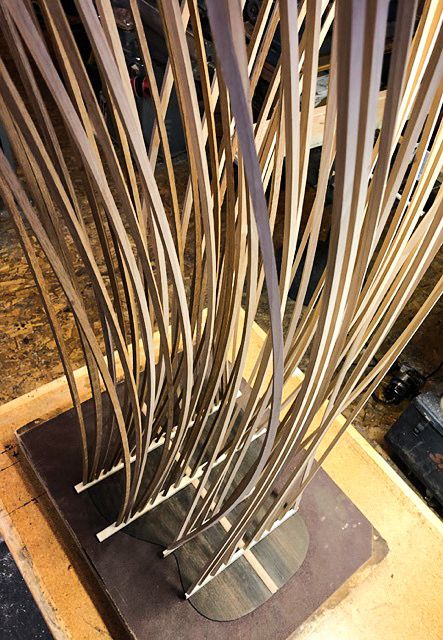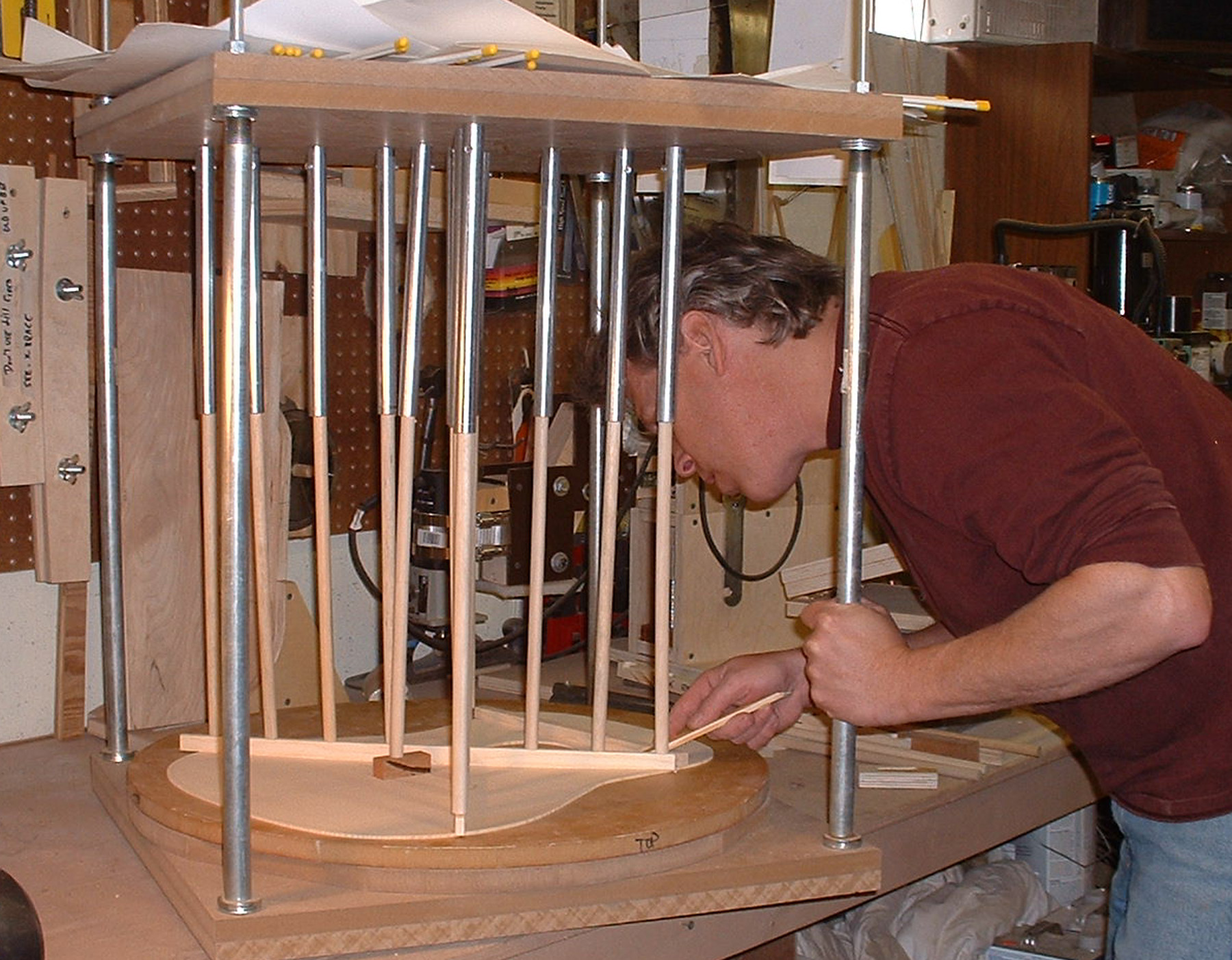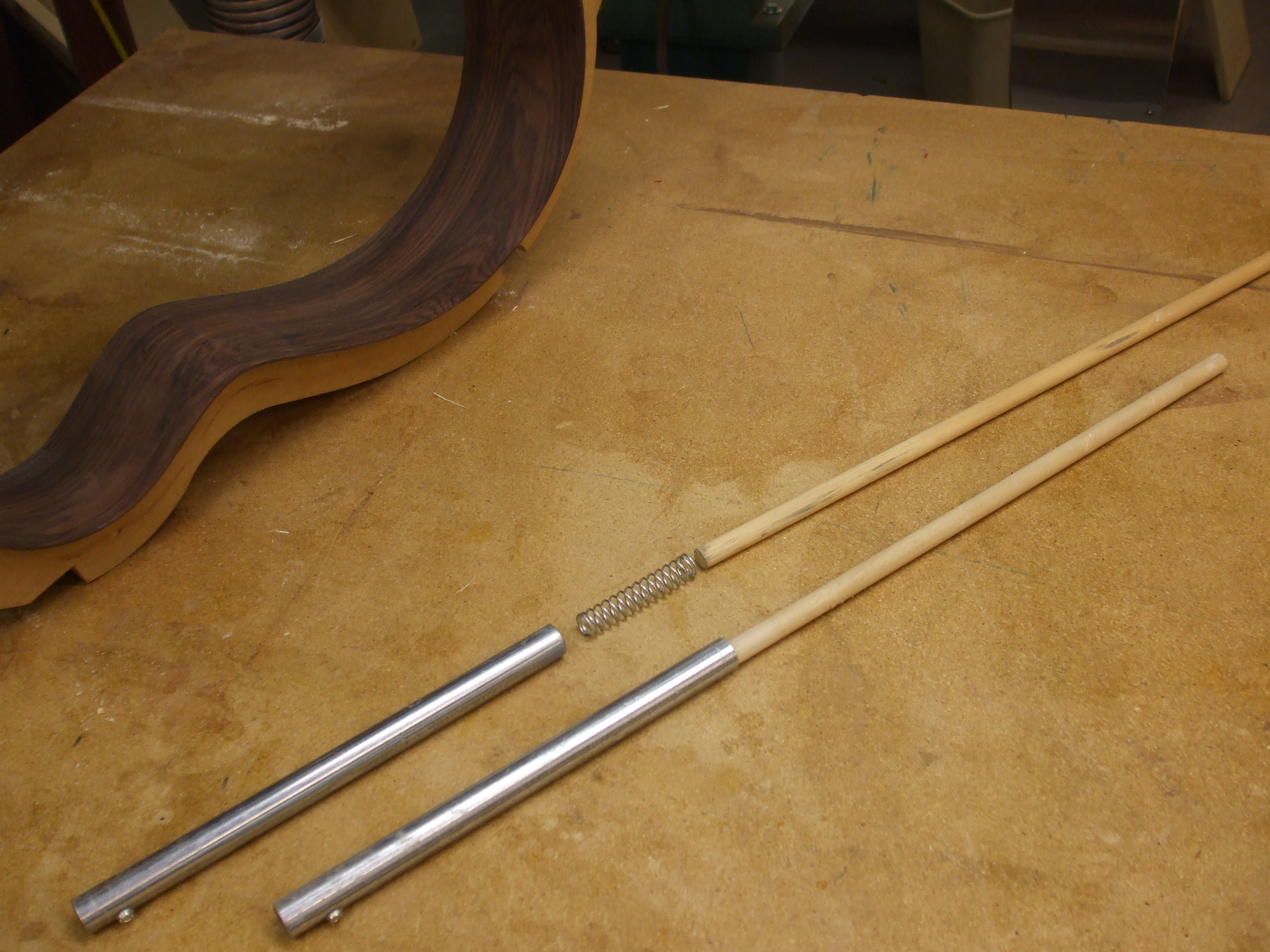
 |
|
#1
|
|||
|
|||
|
Hey everyone,
I have been searching for a good set of affordable rods for a gobar deck. I know some use wooden rods, and many use fiberglass ones. One concern with the fiberglass rods is that some can splinter REALLY badly, which is quite painful. I don't know if this is true of rods that are specifically sold for gobar decks or not. I have seen some decently priced 1/4" diameter fiberglass driveway marker rods. They are 48" long, and have these rubber caps on the end with a point in the middle. I'm not sure if that would work or not (I mean actually hold braces in place). Does anyone have experience with trying different things, and have a suggestion for affordable solutions for a gobar deck? Many thanks, Colby |
|
#2
|
|||
|
|||
|
That's all I use (driveway markers). More thoughtful folks might be using rods from a kite vendor but I've never owned any of them.
|
|
#3
|
||||
|
||||
|
Quartersawn 1/4” x 3/4” Black Walnut and White Oak is mostly what I use. Early on I tried FG rods and hated them. Way too stiff and they splinter as you noted. I’ve used Oak, Cherry and Ash too but Walnut and Oak tend to be the stiffest on average.
Last edited by Tim McKnight; 03-04-2023 at 06:44 AM. |
|
#4
|
||||
|
||||
|
We use 5/16” wooden dowels from *wherever*.
A lot are Poplar, some are whatever-the-hardware-store-has-in-stock dowels. They last a surprisingly long time. But when they go, it’s exciting. Usually a piece will go flying somewhere, but they are inexpensive to replace. |
|
#5
|
||||
|
||||
|
Mockernut Hickory works well (stiff).

__________________
A bunch of nice archtops, flattops, a gypsy & nylon strings… Last edited by iim7V7IM7; 03-04-2023 at 07:31 AM. |
|
#6
|
|||
|
|||
|
I use what Steve uses. The oak dowels seem to last longer. I have become really careful to wear eye protection over the past few years after a couple close calls with the dowels breaking and flying in unpredictable directions. Dave
|
|
#7
|
||||
|
||||
|
I use these spring loaded go bars. I love the way the pressure goes straight down. I got this idea from a visit to Julius Borges' shop. The photos below are from quite a few years ago as indicated by my darker hair and a lot less crap on the bench.
 
|
|
#8
|
|||
|
|||
|
I love the idea of the spring loaded rods, especially if you find a good source for the appropriate compression springs. It would also be easy enough to drill a series of holes in the upper sleeve to make them adjustable for various uses. That would make them equally useful for bracing a plate or adding a top or back to body sides.
The go bar setups I've seen that look most useful are the ones that look more like a wall-mounted shelf over a bench. I made up one a long time ago with the usual "joined plates" concept and it was just in the way most of the time. |
|
#9
|
||||
|
||||
|
My go-bar deck is mounted on a lazy-susan. It is an awesome feature esecially for cleaning up squeeze out. Of course I need to keep some extra room around it to let it rotate. Yes the deck takes up a lot of room in the shop and when it not in use becomes sort of a catch all for guitar bodies etc.
|
|
#10
|
|||
|
|||
|
Thank you guys for all the responses. I'm surprised to see how many use wooden rods. Some mentioned in the past how they break easily. But they must be more reliable than I was told, if so many luthiers use them.
|
|
#11
|
||||
|
||||
|
It never would have occurred to me to buy go-bar sticks. I have always had plenty of otherwise useless seeming scraps in the shop, and wood seems ideally suited to the task. I currently use sticks made from Walnut, Maple, Hmah, Cambodian Rosewood, Jatoba, and White Oak. Of these, these last two are the best. My White Oak are from left over flooring that I used on my living room. For the Oak, I like 5/16" x 5/8", and 1/4" to 1/2" longer than the required span seems ideal. Jatoba can be somewhat skinnier. If the wood is grain aligned, as all of our wood should be, breakage is quite rare. Maybe I have broken 3 sticks in 500 instruments, probably because I am moving too fast and being clumsy.
|
|
#12
|
|||
|
|||
|
Quote:
And when you mention 1/4" to 1/2" longer then the required span -- if I have a 28" space to the soundboard below, should the rod be about 28.5" long? |
|
#13
|
||||
|
||||
|
There is no purpose in making the sticks any particular shape, though I do break the edges in the interest of comfort and avoiding splinters. The span to which I refer is the distance between the ceiling of the deck and the object which you are clamping down. Your questions make me suspect you are over thinking.
|
|
#14
|
|||
|
|||
|
I have used wood and fiberglass road markers. I have two thicknesses, one about 0.220" and the other 0.0260". The thinner one is fine, the thicker one too stiff. I had never had one splinter on me but I have had them shoot all over the place when I had one slip. My fault though.
__________________
Fred |
|
#15
|
||||
|
||||
|
You could make the spring loaded go-bars adjustable as you suggest. I found it easier just to use small blocks placing them at the between the top of the deck and bar. I get the bar set, and if I need to engage the spring a little more, I will place the block there. Takes a couple of seconds. I think Julius had a set of wedge shaped blocks for quick adjustment. This is fast and I am not fumbling around with screws.
|
 |
|
| Tags |
| bracing, fiberglass, gluing braces, gobar, gobar deck |
|
|